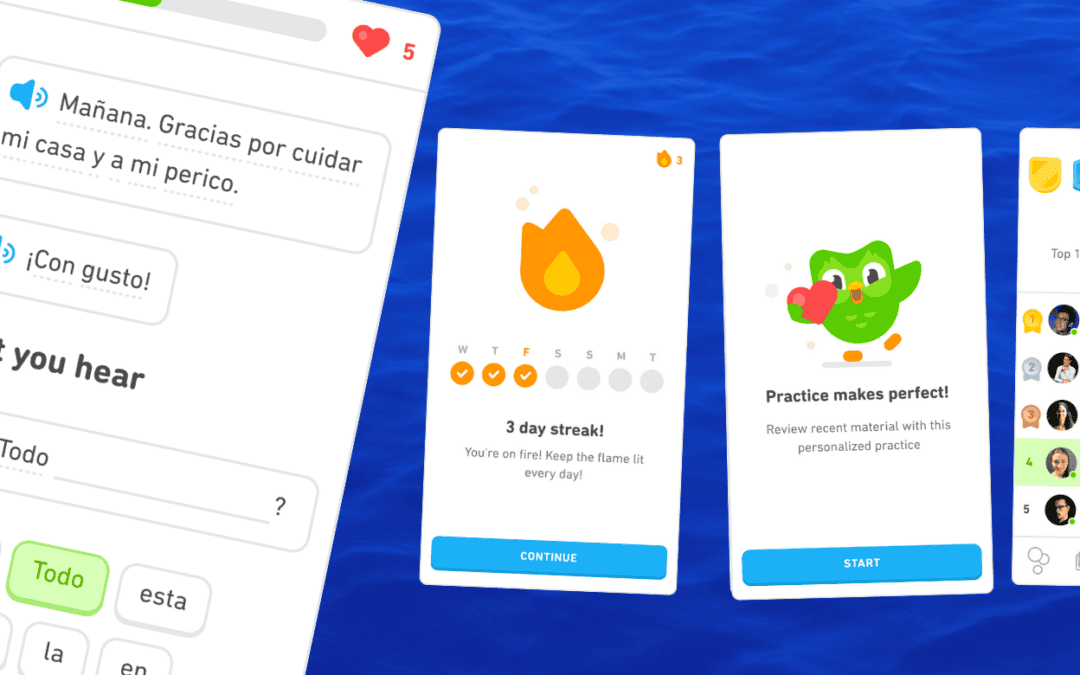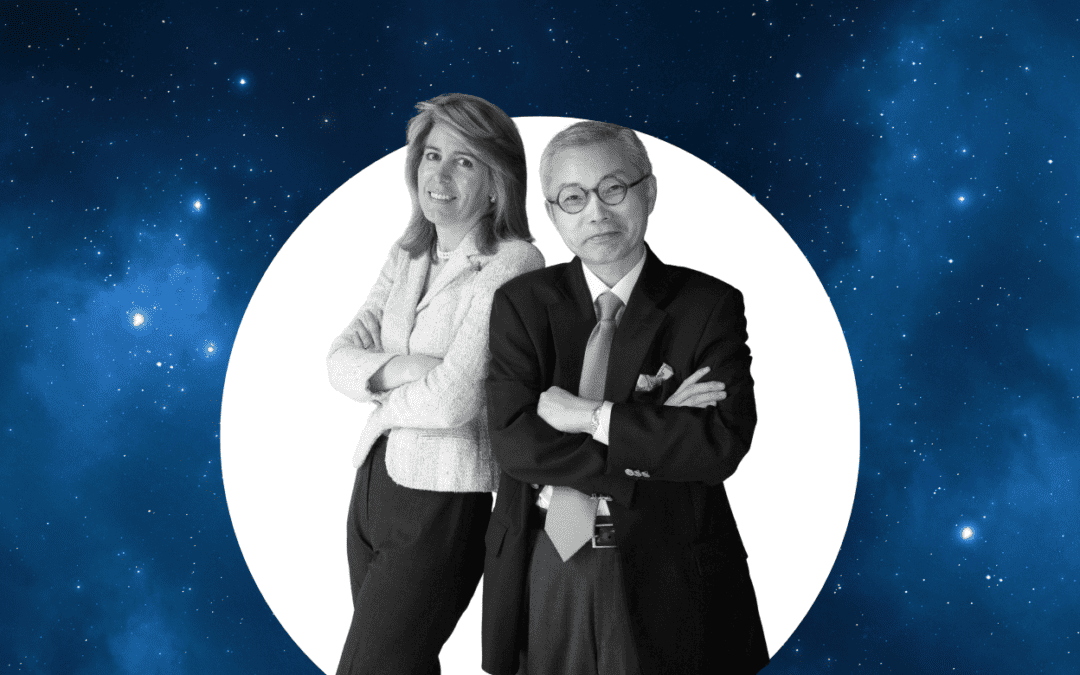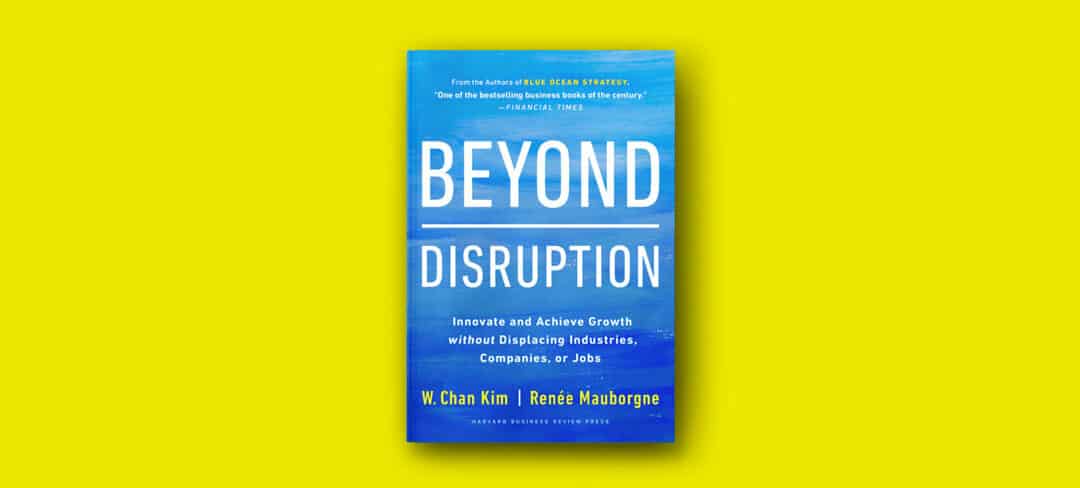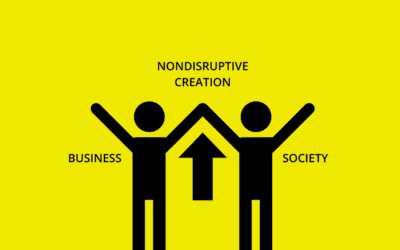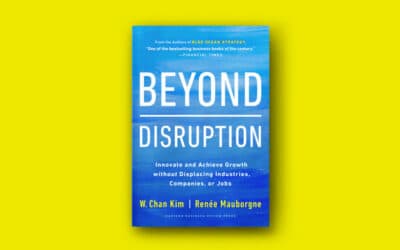Do you want to make a successful blue ocean shift? Then you need the right perspective, practical tools and a humanistic process.
1. Adopting a blue ocean perspective
The first component is adopting a blue ocean perspective so that you expand your horizons and shift your understanding of where opportunity resides.
Too many organizations are wedded to industry best practices even as they strive to break away from them. Adopting the perspective of a blue ocean strategist opens your mind to what could be, instead of limiting it to what is. It expands your horizons and ensures that you are looking in the right direction. Without expanding and reorienting your perspective, striving to open up a new value-cost frontier is like running west looking for the sunrise. No matter how fast you run, you’re not going to find it.
Organizations that open up new value-cost frontiers think differently. That is, they think about different things than those that are focused only on competing in their current markets. They raise fundamentally different sets of questions that enable them to see and understand opportunities and risk in fresh and innovative ways. This allows them to conceive of different kinds and degrees of value to offer customers that others either can’t see at all or dismiss as impossible or irrelevant. With an expanded field of vision, they can, for instance, imagine creating a national youth orchestra worthy of global praise, even though it lacks highly trained musicians or quality instruments, by reconceiving it as a showcase for bridging cultural divides and promoting peace. They can imagine building rehabilitation centers on military bases for petty criminals, even though that defies the historical separation of the military, police, and prison administrations. They can imagine creating a new kind of home French fry maker that produces fresh, tasty, and healthier fries without frying.
While the right perspective is critical, for most of us it is not sufficient to actually conceive of and open up a new value-cost frontier. This is one of the greatest challenges organizations face. They want to get out of the red ocean. They want to make a blue ocean shift. They may even have a blue ocean perspective. However, they lack market-creating tools and guidance to turn their blue ocean perspective into reality.
2. Practical tools for market creation
The second component, therefore, is having practical tools for market creation with proper guidance on how to apply them to translate a blue ocean perspective into a commercially compelling new offering that creates new market space.
If the right perspective is a matter of shifting one’s strategic thinking by asking different questions, market-creating tools and guidance enable you to ask the right questions at the right point in the process and to see the significance of the answers. Taken together, they build people’s creative competence and provide the structure and parameters within which to organize your thinking so you can conceive and discover what others don’t see, and avoid the potential pitfalls that trip up most organizations. Step-by-step, they guide you through the central questions for opening up a breakthrough value-cost frontier: How do you challenge the explicit and implicit assumptions you hold regarding your business and your marketplace? How do you go about identifying the ocean of noncustomers to create new demand? How can you systematically redefine market boundaries to open up a new value-cost frontier that makes the competition irrelevant? How can you create offerings that stand apart while simultaneously achieving lower costs? And how do you go about building a supporting business model that your organization will follow to profitably bring your strategic vision to market?
What makes these tools and frameworks so powerful is that they are visual, which renders them easy to understand and apply, no matter what an individual’s level of education or creativity. By showing in a single-page graphic or diagram how the critical factors relate to one another, each tool enables everyone to see the answer to each question emerge, thus keeping everyone, well, on the same page.
What makes these tools and frameworks so powerful is that they are visual
Our book Blue Ocean Strategy introduced these tools, but the devil, as they say, is in the operational details. Here we delve deeply into those details: We show you how to put the right team together, set up the process, and systematically apply each tool, in what sequence, to produce results and avoid and overcome potential stumbling blocks along the way. We are not talking about offering lessons from a 30,000-foot perch. Instead, what we do here is empower managers with practical, hands-on guidance at every step of the journey from the red ocean to the blue.
Making a blue ocean shift is a transformational journey. It requires more than a clear idea and strategy to open up a new value-cost frontier. To move toward the new frontier, you have to bring people along. Without people’s voluntary cooperation, you will be stopped dead in your tracks, as every professional of a certain age knows. While most strategy work does not delve into the human side of organizations, yours should.
3. A humanistic process
Accordingly, the third component is having a humanistic process, something we have come to call “humanness” in the process, which inspires and builds people’s confidence to own and drive the process for effective execution.
Most organizations face internal hurdles to change. This might be a cognitive hurdle because people are wedded to the status quo. Or a political hurdle created by deep divisions or structural silos that breed internal tensions and infighting. Or a motivational hurdle, because people focus on doing what it takes to get by, but lack the energy, passion, and drive to make a real difference. Paul MacAlindin and the National Youth Orchestra of Iraq, for example, faced the daunting hurdle of bringing people who had been divided by years of fratricidal war together as a team. In Groupe SEB, ingrained ways of doing things and skepticism presented tough organizational hurdles to get over. The Malaysian government faced the classic hurdles stifling most governments today—ministerial silos and cross-ministerial tensions, not to mention the motivational hurdle of a bureaucratic, civil servant mentality.
Ironically, our research shows that the two most common practices organizations rely on for execution are also the reason most transformative efforts fail. First, most organizations treat strategy creation and execution as separate and sequential activities. One group of people devises a strategy and then hands it off to another to execute. For the most part, academic research on strategy and innovation reinforces this bifurcation and sequence. Second, when it comes to execution, most of the time and attention get focused on making structural changes and using carrot and stick approaches, such as changing spans of control, aligning incentives, setting up key performance indicators, and the like.
While carrots, sticks, and structural shifts have their roles to play, they do little to inspire and build people’s confidence, which is critical to creating transformative change.
To do that, organizations should essentially do the opposite of what they commonly do.
Instead of treating execution as something that happens after the strategy has been set, it needs to be built into the strategy from the start or people won’t own it. Also, you need to focus on the emotions and psychology of your people, instead of putting most of your energy into manipulating the mechanistic levers of structure, punishments, and rewards. If you can move people by inspiring and building their confidence to own and drive your new strategy, they will be committed to seeing change through and overcoming the organizational constraints you confront.
How can you capture people’s hearts and minds and align them with your new strategy? Change, after all, is threatening, and asking people to make a blue ocean shift does just that by asking them to move away from what they know to a new frontier. Yet surprisingly, as we studied organizations that had made successful blue ocean shifts, we saw that people became more creative and more energized, and that execution wasn’t questioned—precisely what you want to achieve, but what’s typically so elusive. Why would that be? The longer we thought, the more clearly we could see that there was something about the process that recognized people, acknowledging their fears, their insecurities, their need to be treated with dignity, their desire to matter. We struggled to figure out what word could capture this something and best describe it. The closest we could get was what we came to term humanness.
What we came to understand is this: At its core, a successful blue ocean shift is fundamentally a humanistic process. It does not deny but instead embraces our humanness in such a way that it makes us more competent and confident than we ever imagined. Humanness inspires us to inch along. It recognizes our skepticism and vulnerabilities, our fear that we can’t do it, our doubts over whether there even are blue oceans, our need for intellectual and emotional recognition to make us feel valued. By building humanness into the process, an organization can shift its team’s psychology and create an emotional landscape for change, whether you have 5 people or 10,000.
At its core, a successful blue ocean shift is fundamentally a humanistic process.
The blue ocean shift process accomplishes this not by demanding that anyone change but by easing people’s fears and building their confidence at every step of the way. It does this by weaving atomization, firsthand discovery, and fair process into the entire journey. These elements are key to humanness, our research found, because they touch people at a fundamental level. The good news is that they are reproducible in any organization.
Shifting an organization from a red to a blue ocean does not happen in one day or after one off-site. But it also doesn’t take years. While the final market launch of Groupe SEB’s ActiFry took over two years, because of the time required to secure complex patents, the blue ocean shifts of the National Youth Orchestra of Iraq and even the Malaysian government’s large-scale Community Rehabilitation Program were made in a year or so.
As organizations start to see tangible evidence of opportunities to open up breakthrough value-cost frontiers, energy climbs and momentum to move from the red to the blue ocean is unlocked in a powerful way.




